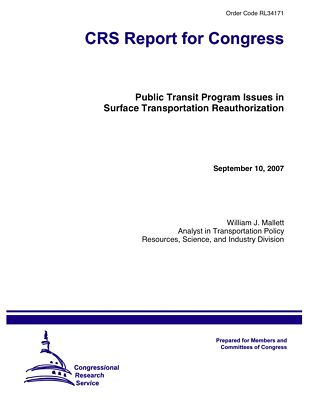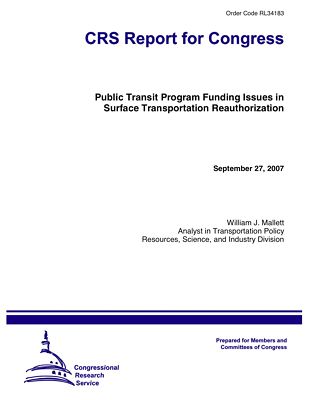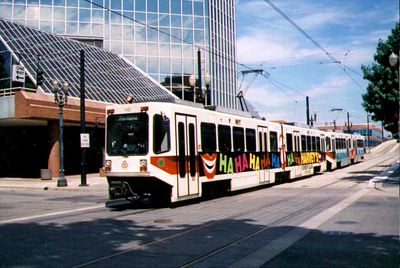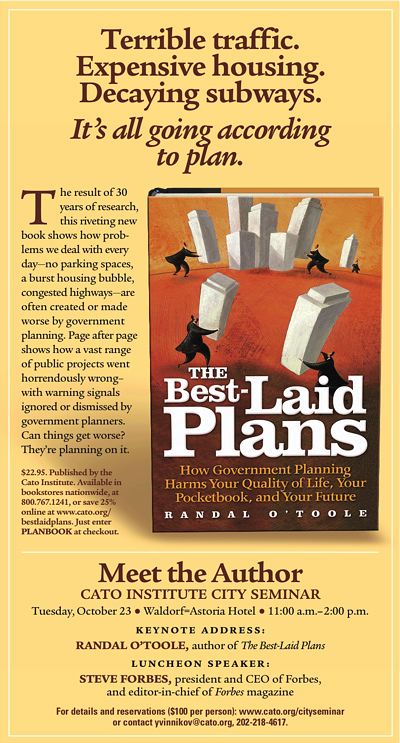Last month, the Congressional Research Service put out two reports on federal transit funding. These reports offer some intriguing alternatives for transit for the next round of federal transportation reauthorization, which is due in 2009.

The first report (above), issued in September, deals a little more with transit history and structure. The almost-identically titled second report (below) came out about two weeks later and deals a little more with transit finance. But the two reports overlap in many ways, including their recommendations.











